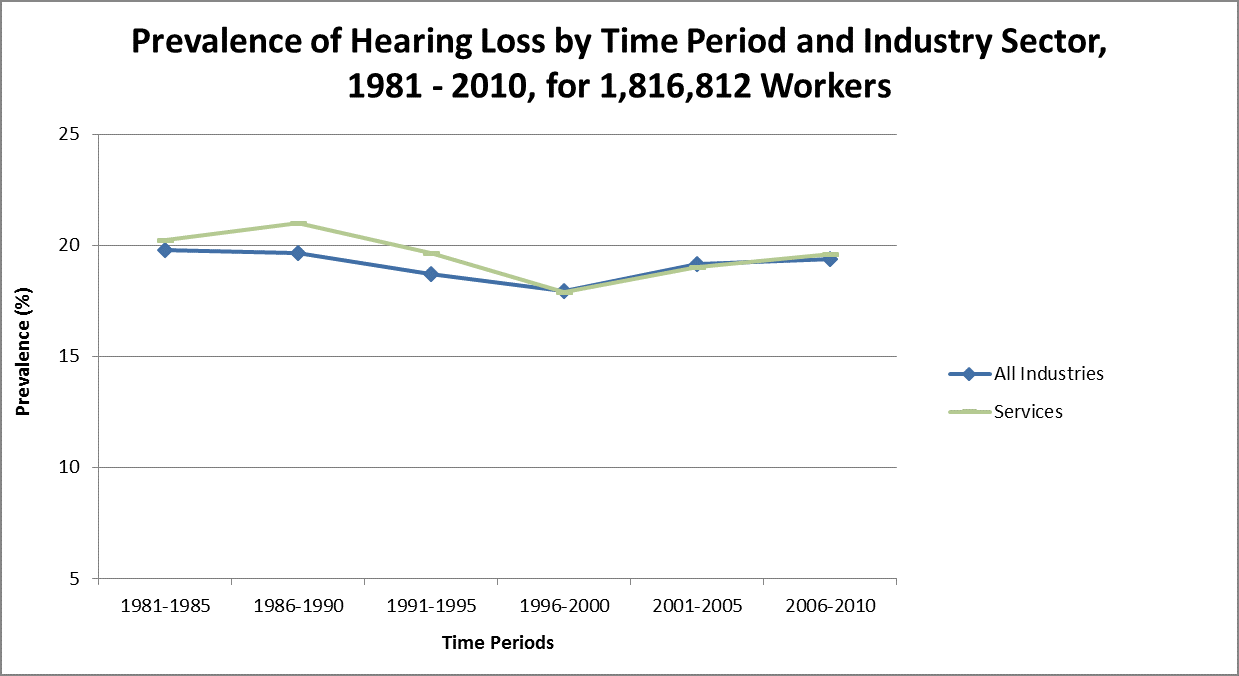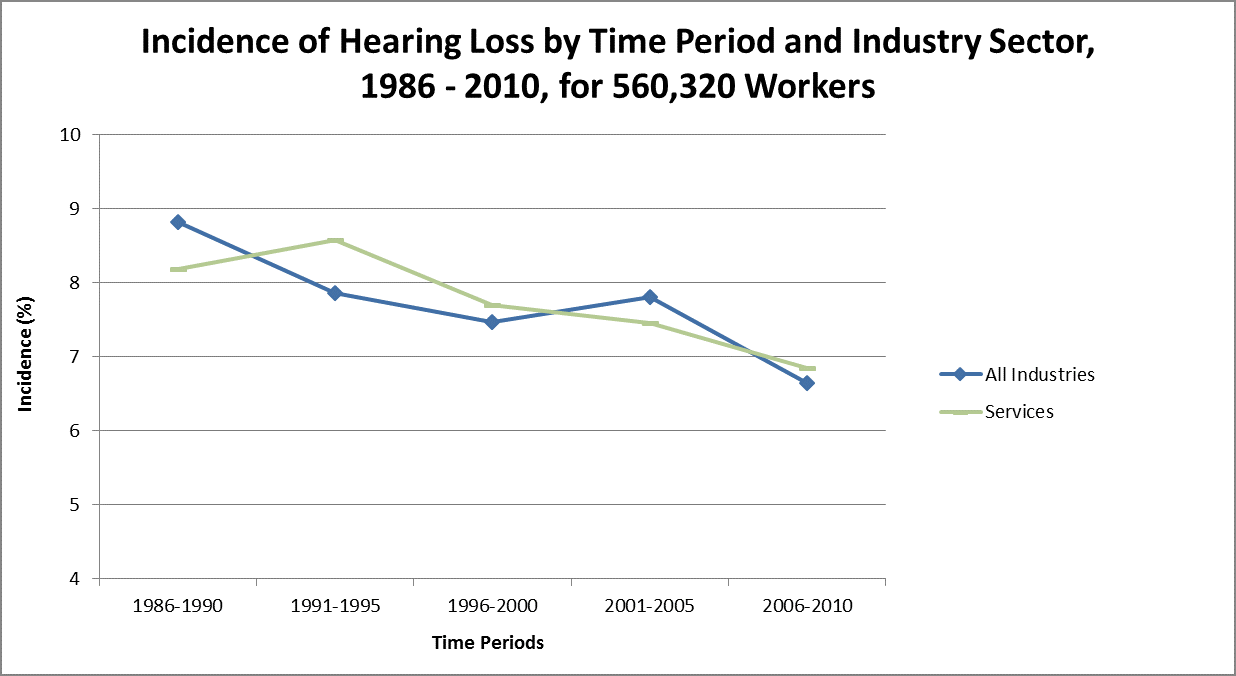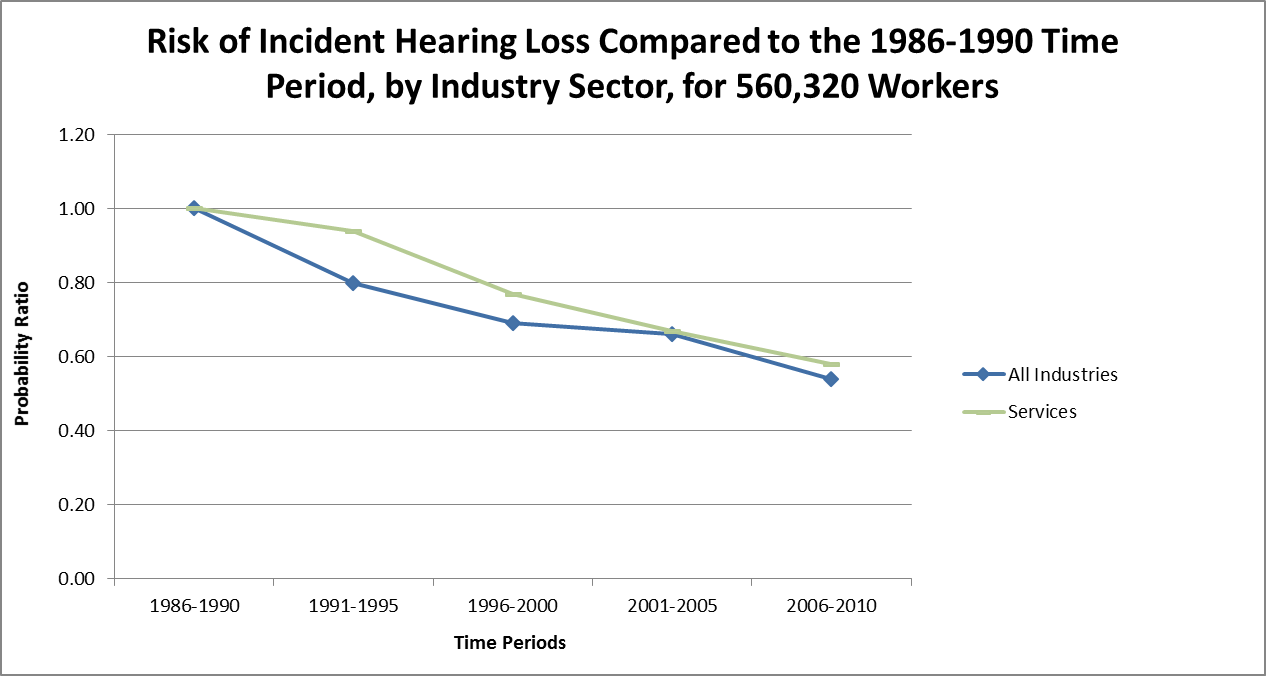At a glance
- View hearing loss trends and statistics among Services (including Public Safety) workers.
- Approximately 8-15% of all Services workers (10% overall) have hearing difficulty, depending on sub-sector.
- About 6-10% of all Services workers have tinnitus, depending on sub-sector.
- 41-90% of noise-exposed Services workers report not wearing hearing protection.

Noise exposure and hearing protection
- Approximately 11-34% of all workers in Services (21% overall) have been exposed to hazardous noise, depending on sub-sector.1 Sub-sectors with the highest percentage exposed were:
- Administrative and Support and Waste Management and Remediation (34%)
- Public Administration (including Public Safety) (28%)
- Arts, Entertainment, and Recreation (28%)
- Administrative and Support and Waste Management and Remediation (34%)
- 41-90% of noise-exposed Services workers report not wearing hearing protection, depending on sub-sector.2 The sub-sectors with the highest percentages of workers were:
- Accommodation and Food Services (90%)
- Education Services (82%)
- Finance and Insurance (80%)
- Accommodation and Food Services (90%)
Hearing loss and tinnitus
- Approximately 8-15% of all Services workers (10% overall) have hearing difficulty, depending on sub-sector.1
- About 6-10% of all Services workers have tinnitus, depending on sub-sector.3
- About 17% of noise-exposed tested Services workers have a material hearing impairment.4 Hearing impairment is hearing loss that impacts day-to-day activities.
- 13% of noise-exposed tested Services workers have hearing impairment in both ears.5
Trends
Trends among noise-exposed tested services workers (1981-2010)6
- The prevalence for Services decreased less than 1% over 30 years (1981-2010) as compared with a less than 1% reduction for all industries.
- The incidence for Services decreased 1% over 25 years (1986-2010) as compared with a 2% reduction for all industries.
- The adjusted risk for Services decreased 42% over 25 years (1986-2010) as compared with a 46% reduction for all industries.



Return to occupational hearing loss statistics
Go back to select another industry.
Content Source:
National Institute for Occupational Safety and Health
- Kerns E, Masterson EA, Themann CL, & Calvert GM. (2018). Cardiovascular conditions, hearing difficulty and occupational noise exposure within U.S. industries and occupations. American Journal of Industrial Medicine, 61, 477-491.
- Green DR, Masterson EA, Themann CL. (2021). Prevalence of hearing protection device non-use among noise-exposed U.S. workers in 2007 and 2014. American Journal of Industrial Medicine, 64(12), 1002-1017.
- Masterson EA, Themann CL, Luckhaupt SE, Li J, & Calvert GM. (2016). Hearing difficulty and tinnitus among U.S. workers and non-workers in 2007. American Journal of Industrial Medicine, 59, 290-300.
- Sekhon NK, Masterson EA, & Themann CL. (2020). Prevalence of hearing loss among noise-exposed workers within the Services Sector, 2006-2015. International Journal of Audiology.
- Masterson EA, Bushnell PT, Themann CL, & Morata TC. (2016). Hearing impairment among noise-exposed workers — United States, 2003–2012. Morbidity and Mortality Weekly Report, 65(15), 389-394.
- Masterson EA, Deddens JA, Themann CL, Bertke S., & Calvert GM. (2015). Trends in worker hearing loss by industry sector, 1981-2010. American Journal of Industrial Medicine, 58, 392-401.
